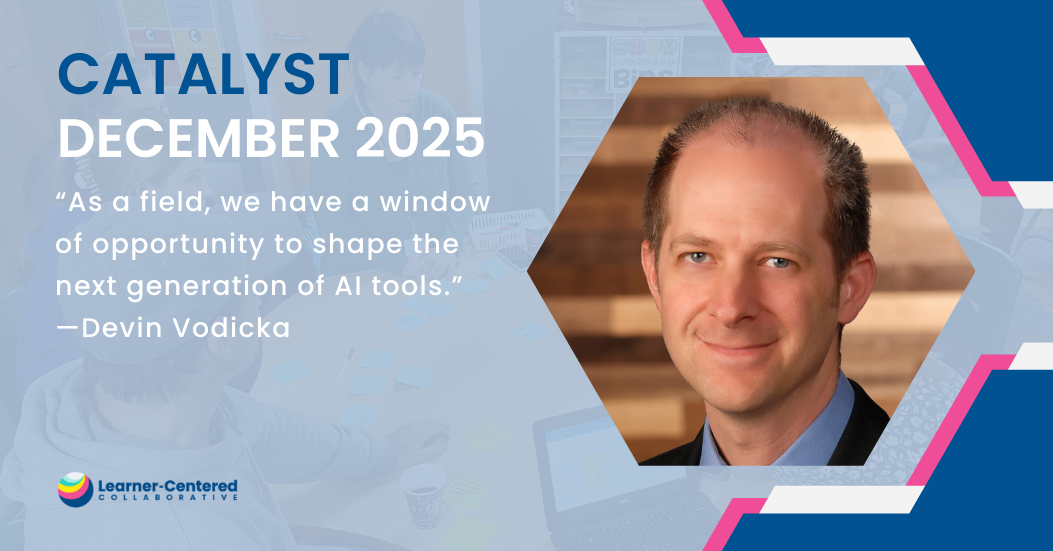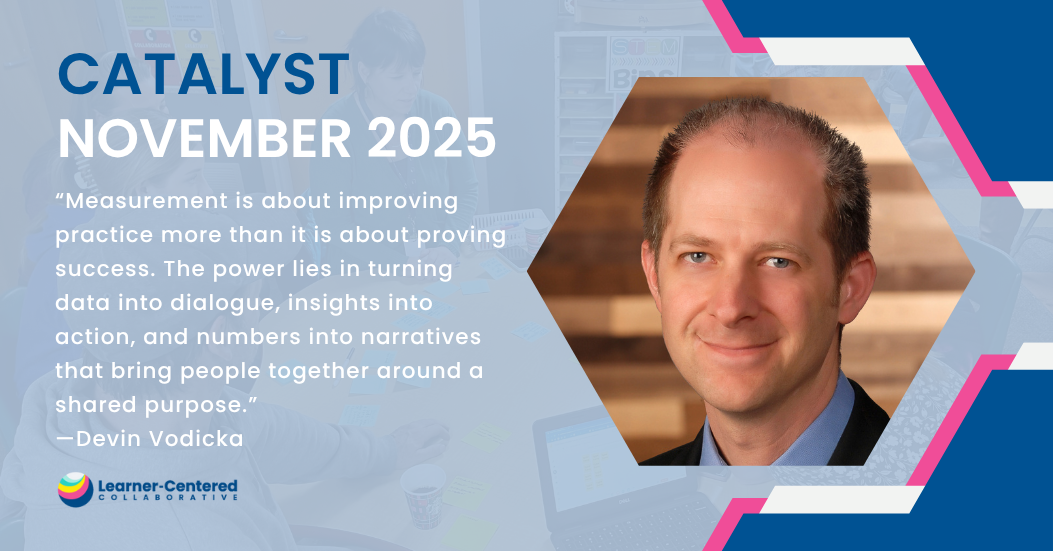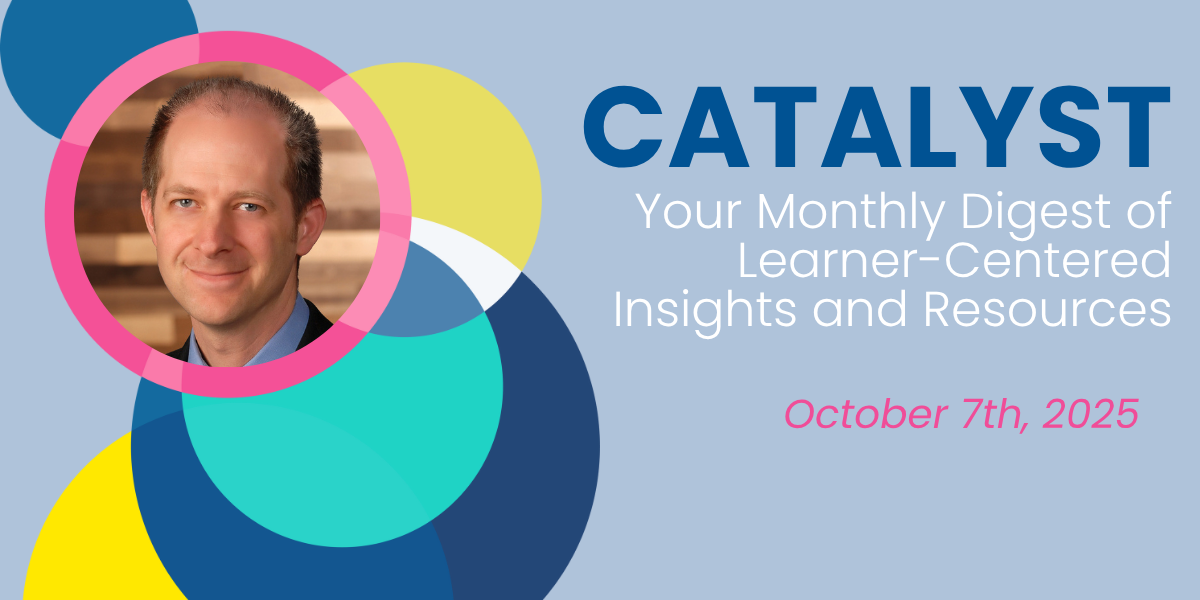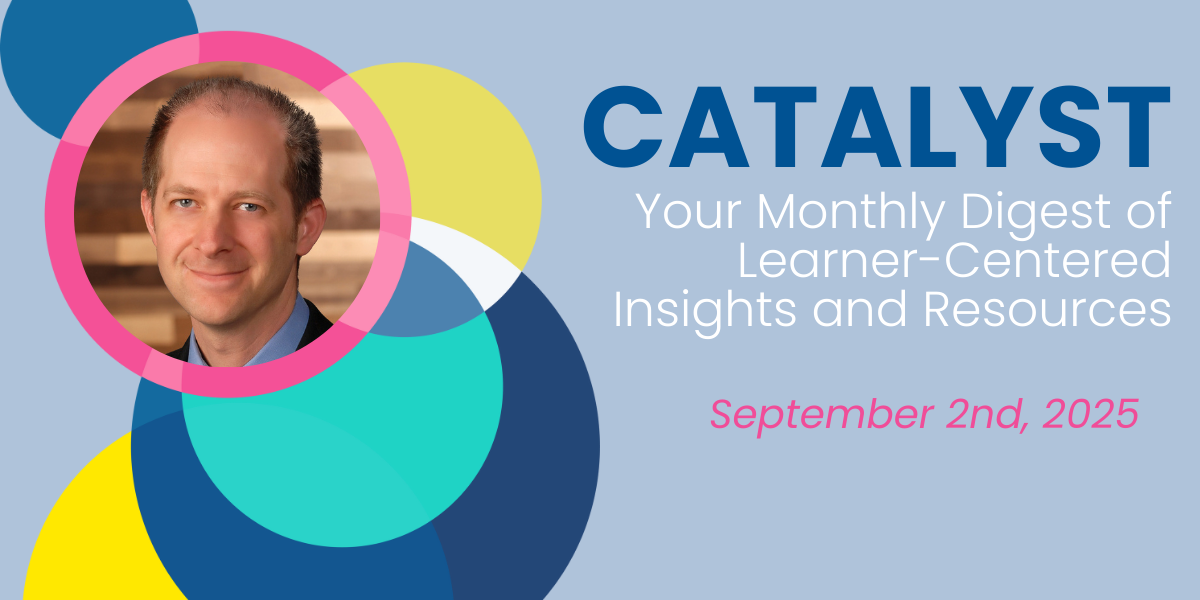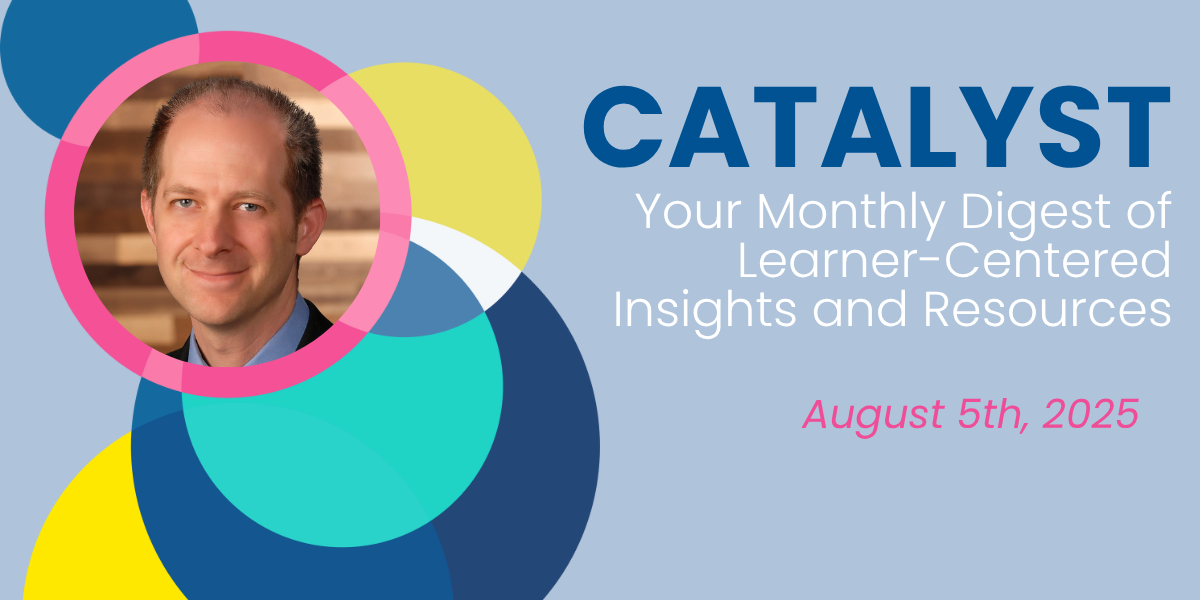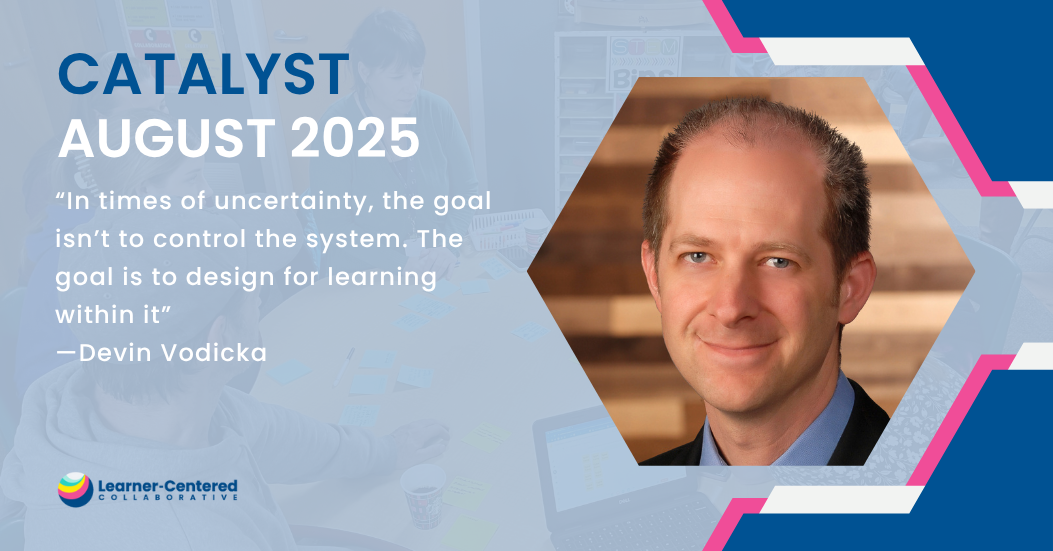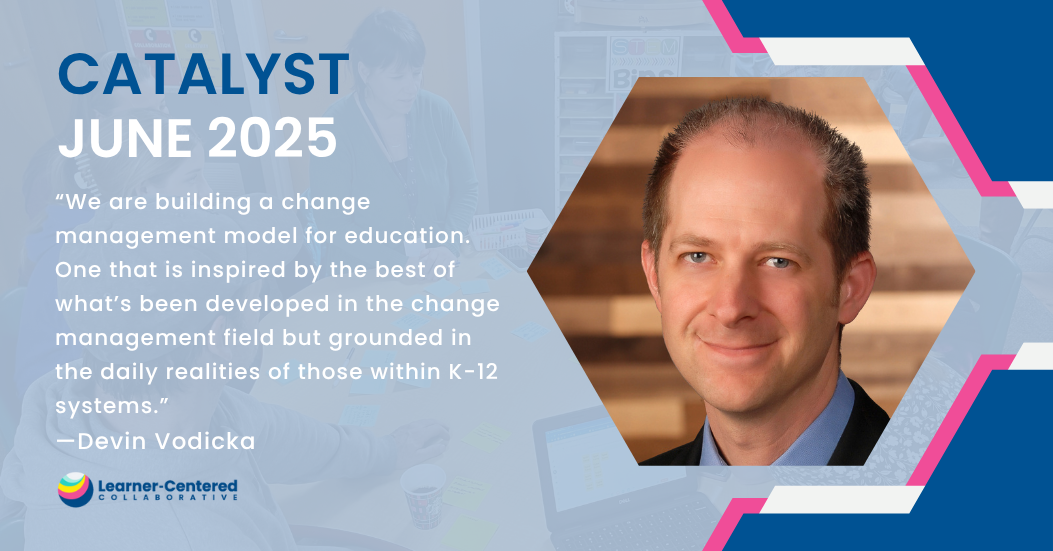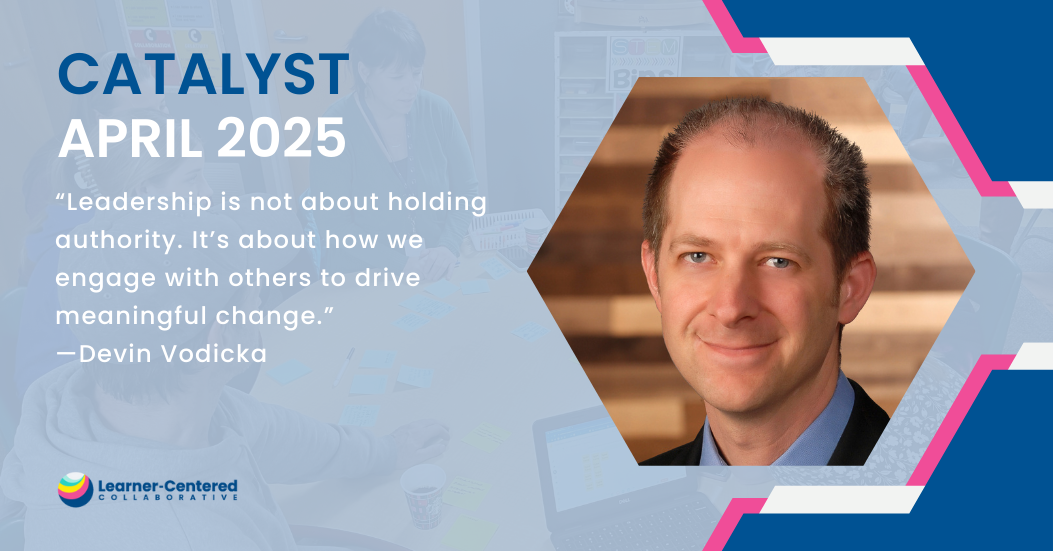In conversations across the country, I hear a growing mix of excitement and apprehension about the role of artificial intelligence in education. Many see the potential, yet most also sense…
Blog
This is Our Opportunity to Create A Learner-Centered Path for AI Integration in Education
In conversations across the country, I hear a growing mix of excitement and apprehension about the role of artificial intelligence in education. Many see the potential, yet most also sense a disconnect between what today’s AI tools produce and the kinds of learning experiences we want for young people. This tension is not incidental—it…
Blog
Measuring What Matters to Enable Meaningful Learner-Centered Change in Your School or District
When we talk about measuring impact, we can look at it through multiple lenses. There’s the impact on an individual learner (young people and adults)—how they’re growing, what competencies they’re developing, and how they perceive their own progress. Then, there’s the impact on the systems (e.g. programs, schools, districts)—how they’re evolving, what conditions are…
Blog
Big Moves: How to Create a Strategic Plan That Leads to Real Change in Your District
One of the most inspiring aspects of working with school systems across the country is seeing how deeply educators care about their learners. In every community I visit, I encounter dedicated, well-intentioned people doing everything they can to help students succeed. Yet, too often, these efforts occur in isolation—teachers working within their classrooms, principals…
Blog
Embracing Possibility at the Start of a New School Year
This year, my daughter begins her journey as a fourth-grade teacher. Over the past few weeks, I’ve had the privilege of helping her set up her classroom and hear about her experiences during new teacher orientation. During one of our conversations, she asked me, “If you were still a superintendent, what would you be…
Blog
Leading at the Edge: Navigating Uncertainty With a Local R&D Strategy
We are living at the “edge of chaos.” It’s a phrase coined by chaos theory physicist Norman Packard, and one that feels right at home for educators today. Artificial intelligence is accelerating change. Public trust in education continues to dip. And funding, data, and policy supports that once anchored decision-making have shifted or entirely…
Blog
What is the Purpose of School? A Call for Whole-Learner Outcomes.
What is the purpose of school? For the past four decades, the prevailing national answer—shaped largely by the 1983 report “A Nation at Risk” and documented by historian Patricia Graham—has been singular: Achievement. This focus helped usher in an era of standardization, compliance, and testing. It was designed to respond to global economic anxieties…
Blog
It’s Time for a Change Management Model Built for Learner-Centered Education
How often have we heard learners (adults included) ask, “Why do I need to know this?” It’s a question as old as formal education itself, and one we should never stop thoughtfully addressing. The likelihood of achieving our desired outcome diminishes when the “why” is unclear in any context. This is just as true…
Blog
Leading Through Transition: Leadership Lessons for Summer and Beyond
In education, the rhythm of the year is deeply cyclical. Each year forms a distinct cohort experience for learners, educators, and families alike. When the cohort concludes, there is a natural transition into the unknown. Students move to new grade levels, teachers adapt to new assignments or even new campuses, and leadership teams lay…
Blog
Purpose, Participation, and Feedback: What it Takes to be a Learner-Centered Leader
Too often, leadership is viewed as a position rather than a practice—something tied to a title rather than a way of engaging with others to drive meaningful change. In today’s rapidly shifting educational landscape, that perspective is proving insufficient. With rising rates of superintendent and principal turnover, teacher burnout, and declining enrollment, it’s clear…
Blog
Family Partnerships: A Key Strategy for Supporting Whole-Learner Outcomes
The Mindset That Makes Family Partnerships Possible If we view school as a one-dimensional institution with a narrow purpose—primarily focused on delivering content and measuring student proficiency aligned to narrow metrics—then the idea of partnering with families may seem like an unnecessary distraction. But if we believe learning happens within a larger ecosystem, where…
